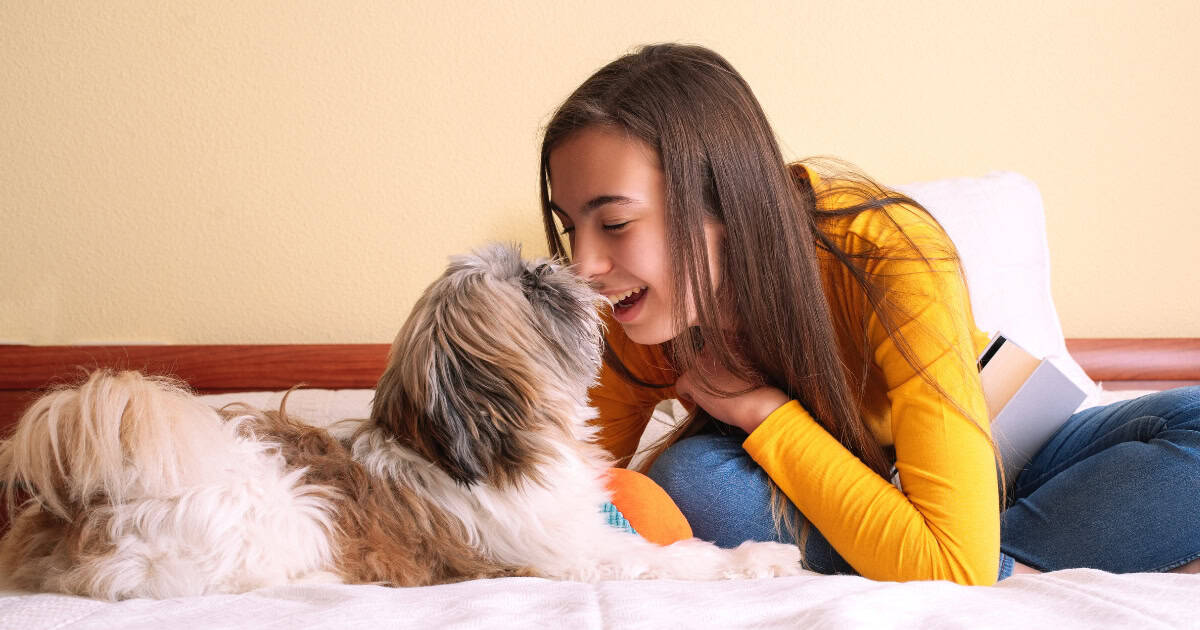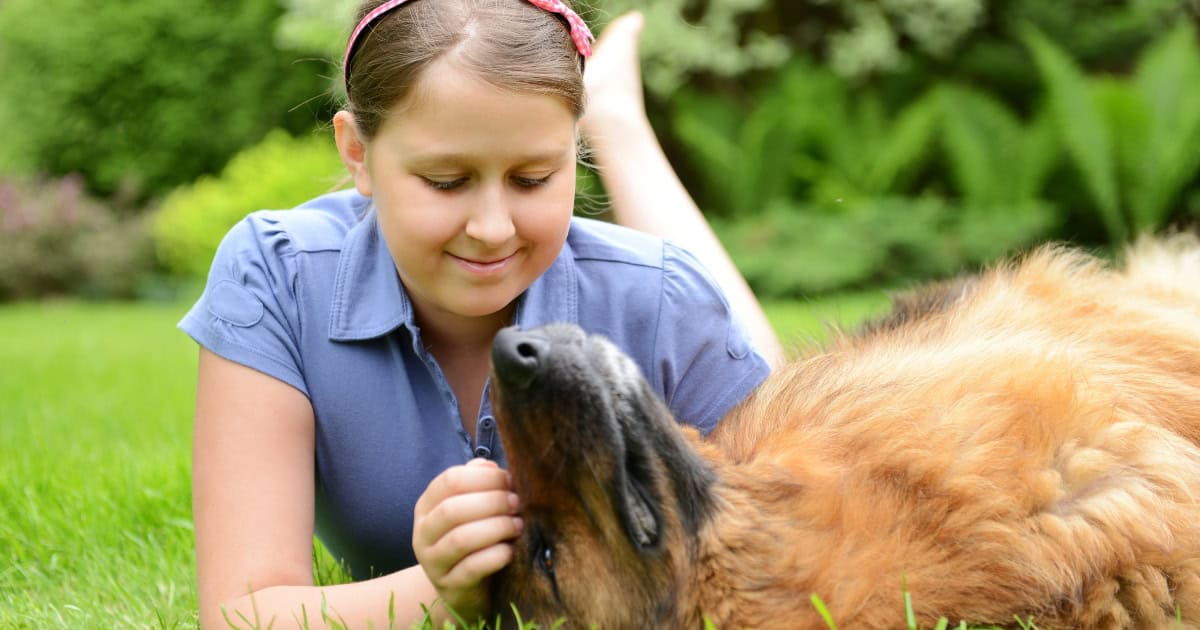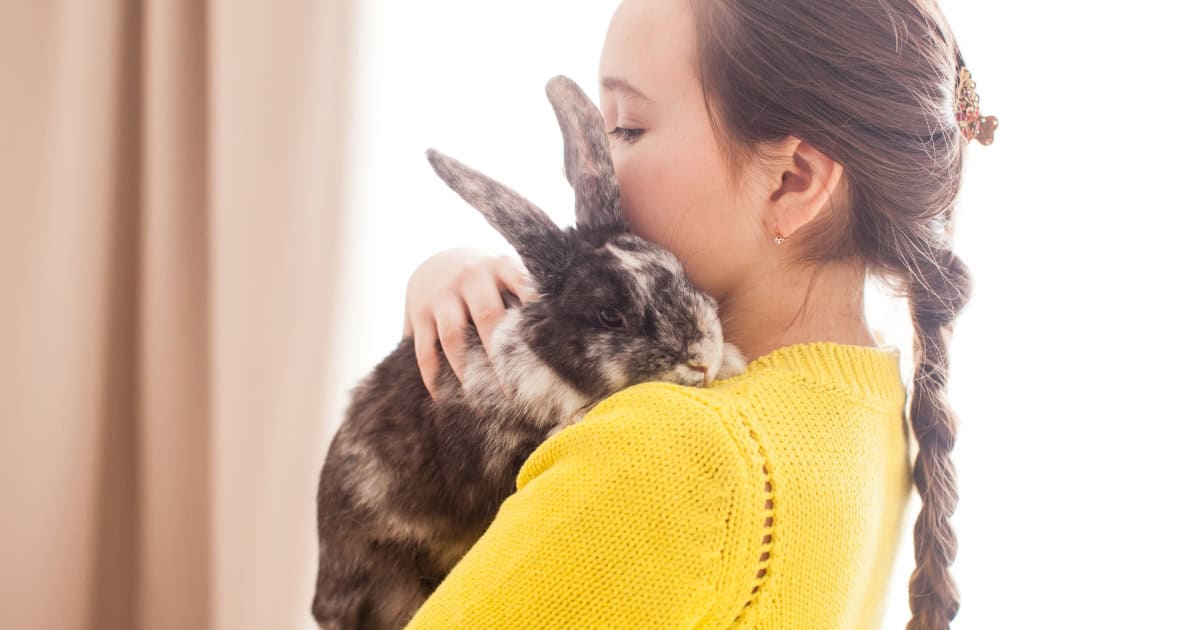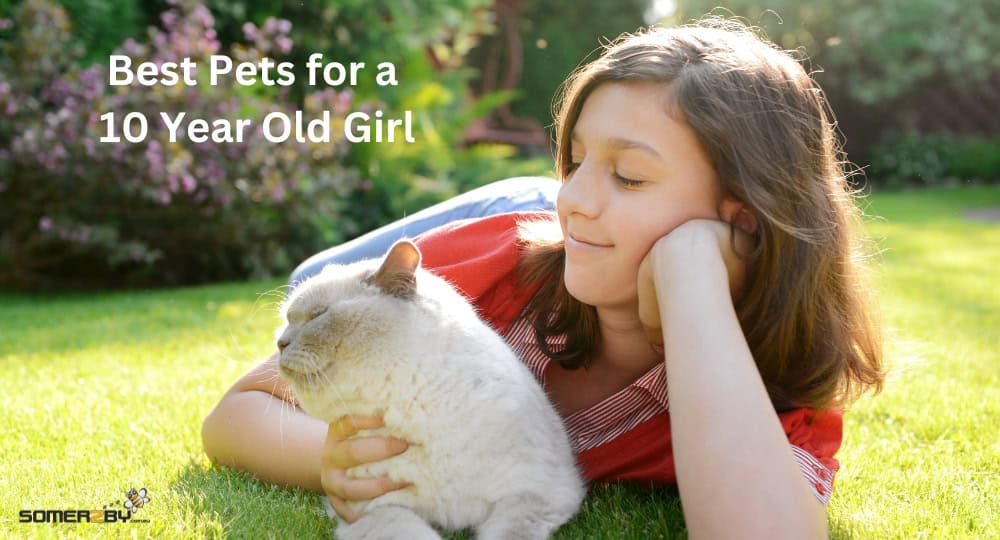How To, Info Guides
Best Pets for a 10 Year Old Girl
Choosing pets for a 10 year old girl can be difficult. Today I’m going to share with you what I’ve learned about finding the perfect small animal for a home with kids.
Whether it’s adorable bunnies, curious lizards or friendly cats, there’s something special out there waiting to become part of your family.
All pets bring their own joys and challenges, so it’s important to consider what’s right for both your child and your household. Let’s explore some fantastic options that will make any young animal lover’s heart sing!
- 5 Best Pets for a 10 Year Old Girl
- What to Consider When Choosing a Pet for Your 10 Year Old Daughter
- How to Prepare Your Home and Family for a New Pet
- Teaching Your Child Proper Pet Care and Interaction
- Understanding the Commitment of Pet Ownership
- Choosing the Right Pet Based on Your Child’s Personality and Interests
- Ensuring a Positive and Safe Pet Experience for Your Child
- Fostering Responsibility and Empathy Through Pet Ownership
- Toni’s Wrap
5 Best Pets for a 10 Year Old Girl
When choosing the best pets for a 10 year old girl, there are several great options to consider. As a parent, you want to make sure that the pet you choose is not only a suitable companion for your daughter but also a good fit for your family’s lifestyle and budget.
A pet is a long-term commitment that requires time, attention and financial resources. But with the right pet, your daughter can learn valuable life lessons about responsibility, empathy and unconditional love.
Guinea Pigs
Guinea pigs are social animals that thrive on interaction, making them great family pets for kids who can dedicate time to playing with them. They have a calm demeanour and are relatively low-maintenance, requiring a moderate commitment in terms of care.
Bearded Dragons
Bearded dragons are exotic animals that can be a good option for older children interested in reptiles. They are generally calm and can be handled gently, but require specific care requirements such as UVB lighting and a varied diet.
Rats
Pet rats are intelligent, social creatures that can form strong bonds with their owners. They are relatively low-maintenance and can be great companions for kids who are looking for a small pet that they can actively engage with.
Rabbits
Rabbits make great pets for kids, as they are gentle and social animals. However, they require a significant commitment in terms of space, exercise and care, so it’s important to research their needs before bringing one home.
Cats
Cats can be a great option for families with kids, as they are relatively low-maintenance and can provide affectionate companionship. However, it’s important to choose a cat with a calm temperament and to teach kids how to properly interact with them.
What to Consider When Choosing a Pet for Your 10 Year Old Daughter
Choosing the right pet for your 10 year old daughter is a big decision that requires careful consideration. As a parent, you want to make sure that the pet you choose is not only a good fit for your child but also for your family’s lifestyle and budget.
Here are some important factors to keep in mind when selecting a pet for your daughter:
Age and Maturity Level
When choosing a pet for young children, it’s important to consider their age and maturity level. Some pets require more responsibility and commitment than others. I remember when my daughter turned 10, she desperately wanted a puppy.
While I knew she was mature enough to handle some of the responsibilities of pet ownership, I also knew that a dog would require a significant time commitment from our entire family.
We ultimately decided to start with a smaller pet, like a rabbit, to help her learn the basics of pet care before moving on to a more demanding animal.
Family Lifestyle
Consider your family’s lifestyle when choosing a pet. If you have limited space in your home, a smaller pet such as a fish or guinea pig may be a better option than a dog or cat.
If you travel or take long vacations regularly, consider who will be able to mind your pet while you are away. It is usually easier to find someone able to watch a small, low-maintenance pet than it is to find someone who can watch a dog.
Space Requirements
Different pets have different space requirements, so it’s important to choose a pet that fits your living situation. For example, a large dog may not be suitable for a small apartment, while a guinea pig can thrive in a smaller space.
Time Commitment
Some pets require more time and attention than others, so it’s important to choose a pet that fits your family’s schedule. Pet dogs, for example, need daily walks and playtime, while cats are more independent and require less daily care.
Working parents aren’t usually able to spend time on a high-maintenance pet. Animals like rabbits require daily care but don’t need constant attention throughout the day so can be scheduled into a busy lifestyle.
Budget
Pet ownership comes with ongoing costs, such as food, supplies and vet visits. Before choosing a pet, research the costs associated with the pet you are interested in.
Consider your budget and whether you can afford the long-term costs associated with caring for that particular animal.

How to Prepare Your Home and Family for a New Pet
Bringing a new pet into your home is an exciting time for the whole family, especially for a 10-year-old girl who has been dreaming of having a furry friend to call her own.
However, before you bring your new pet home, it’s important to take some time to prepare your home and establish some ground rules with your family.
Creating a Safe and Comfortable Living Space
Before bringing a new pet home, it’s important to create a safe and comfortable living environment for them. This may include purchasing a hutch or tank, setting up a litter box, or creating a designated area for the pet to sleep and play.
Gathering Essential Supplies
Different pets require different supplies, so it’s important to research what your new pet will need before bringing them home. Visit Somerzby’s online pet store to purchase carriers, food and water bowls, bedding and toys.
Establishing Family Rules and Responsibilities
Before bringing a new pet into the family, sit down with your kids to lay out some guidelines for living with your new companion.
It is important to set expectations early of who will be responsible for feeding, cleaning and grooming the new family pet. If you don’t do this, your school age children may assume you – the parents – will do all the work.
Teaching Your Child Proper Pet Care and Interaction
Starter pets teach children valuable lessons about responsibility and empathy. However, it’s important to make sure that your child knows how to interact with their new pet safely and appropriately.
Here are some tips for teaching your child proper pet care and interaction:
Handling and Socialisation Techniques
Teaching your child how to properly handle and interact with their new pet is crucial for both the animal’s well-being and your child’s safety.
This may include techniques such as gentle petting, avoiding sudden movements, and respecting the pet’s personal space. For the first few days, watch how children handle the new pet and provide guidance when needed.
Providing Appropriate Food and Water
Different pets have different dietary needs, so it’s important to teach your child how to provide appropriate food and water for their new pet. This may include measuring out portions, topping up food and water daily, and avoiding human foods that may be toxic.
Maintaining a Clean Living Environment
Maintaining a clean living environment is important for your pet’s health and well-being. Teach your child proper cage cleaning, changing bedding, washing food and water bowls, and disposing of waste appropriately. Wash hands regularly.
It may be beneficial to setup a cleaning schedule so these tasks are not forgotten or put off to a later date. Many pets will need their cage spot-cleaned daily with a deep clean weekly, but this can vary depending on the animal and how large their cage is.

Understanding the Commitment of Pet Ownership
When considering pets for a 10 year old girl, your whole family must understand the long-term commitment involved. Pets are living creatures that require ongoing care, attention and financial resources throughout their lives.
Average Pet Life Span
When choosing a pet, consider how long it could live for. Some small animals can live for a long time! Are you willing and able to care for it for many years? As your children grow, will they still be interested in the pet?
Here are the average lifespans of popular pets for a 10 year old girl:
- Guinea pigs: 4-8 years
- Bearded dragons: 8-12 years
- Domestic rats: 2-4 years
- Rabbits: 5-10 years
- Cats: 12-18 years
- Dogs: 10-15 years (varies by breed)
- Budgies: 5-10 years
Potential Health Issues
Just like humans, pets can develop health issues that require veterinary care. Some common health concerns for popular pets include:
- Guinea Pigs: Dental problems, urinary tract infections, cysts.
- Rabbits: Dental problems, gastrointestinal stasis, ear mites.
- Cats: Dental disease, obesity, urinary tract infections.
- Dogs: Dental disease, obesity, hip dysplasia.
Before bringing a pet home, research potential health issues associated with the species and breed. Consider whether your family is prepared to handle potential veterinary care costs and the emotional impact of a pet’s illness.
Ongoing Care Costs
In addition to the initial cost of buying the pet and its enclosure, consider that all animals will have ongoing expenses. According to the ASPCA, the annual cost of caring for a dog or cat can range from $700 to $1,000, depending on factors like size, breed and location.
Smaller pets like guinea pigs and rabbits may have lower annual costs but still have regular expenses for food and bedding.
All pets will have health care costs including regular veterinary check-ups and unexpected illnesses. Before bringing a pet home, create a budget to ensure your family can afford the ongoing costs.
Choosing the Right Pet Based on Your Child’s Personality and Interests
When selecting pets for a 10 year old girl, it’s important to consider her personality, energy level, and interests. The right pet can provide companionship, teach children responsibility and support emotional development.
Matching Pet Temperament to Child’s Energy Level
Consider your child’s energy level when choosing a pet. A high-energy child may thrive with an active dog breed that requires daily walks and playtime, while a more laid-back child may prefer a calm, cuddly guinea pig.
Research the typical temperament of different pet species and breeds.
For example, some dog breeds are known for their gentle, patient nature with children, such as Golden Retrievers and Labrador Retrievers, while others may be more high-strung or require high maintenance care.
Considering Child’s Hobbies and Activities
Think about your child’s hobbies and interests when selecting a pet. An animal-loving child may enjoy learning about exotic pets like lizards or birds, while a child who loves to run and play may prefer an energetic dog breed.
Consider how a pet can fit into your child’s daily life and complement their activities.
A child who enjoys quiet reading time may appreciate the calm companionship of a cat, while younger kids who love nature and outdoor exploration may enjoy learning about and caring for a unique pet like a lizard.

Ensuring a Positive and Safe Pet Experience for Your Child
Bringing a new pet home is an exciting experience for a 10 year old girl, but it’s crucial to prioritise safety and supervision to ensure a positive experience for both your child and the animal.
Supervising Pet Interactions
Always supervise your child’s interactions with their pet, especially in the beginning. Teach your child how to properly handle and interact with their pet, using gentle touches and respecting the animal’s space.
Establish clear rules for pet interactions, such as no pulling on tails or ears, no chasing or cornering the animal, and no disturbing the pet while they’re eating or sleeping. Consistently enforce these rules to ensure a safe and positive relationship between your child and their pet.
Teaching Gentle Handling
Teach your child how to handle their pet gently and respectfully. Show them how to support the animal’s body properly, avoid sudden movements, and respect the pet’s body language.
For small pets like rabbits, teach your child to sit calmly on the floor and let the pet approach them, rather than chasing or grabbing the animal. Encourage quiet, gentle play and discourage rough handling or loud noises that may startle the pet.
Encouraging Regular Veterinary Check-Ups
Regular veterinary check-ups are essential for maintaining your pet’s health and catching potential issues early. Involve your child in their pet’s healthcare by bringing them along to vet visits and encouraging them to ask questions.
Teach your child about the importance of pet preventive care, such as vaccinations, dental cleanings and parasite control. Encourage them to take an active role in their pet’s healthcare by helping groom their coat or administer any necessary medications under adult supervision.
Fostering Responsibility and Empathy Through Pet Ownership
Caring for pets can help a 10 year old girl develop important life skills like responsibility, empathy and compassion. Involve your child in their pet’s daily care routine to foster these qualities and create a strong bond between your child and their animal companion.
Assign age-appropriate tasks like filling food and water bowls, cleaning the litter box or cage, or brushing the pet’s coat. Teach your child to look for signs that their pet needs care, such as a dirty cage or an empty water bowl, and encourage them to take initiative in meeting their pet’s needs.
Caring for a pet can also help your child develop empathy and emotional intelligence. Encourage your child to observe their pet’s body language and behaviour, and teach them how to respond appropriately to their pet’s cues.
For example, if a cat is hiding or a dog is growling, teach your child to give the animal space and respect their boundaries.
Pet ownership can be a rewarding and enriching experience for a 10 year old girl, providing companionship, teaching responsibility and supporting emotional development.
By carefully selecting the right pet for your child’s personality and lifestyle, supervising interactions and involving your child in their pet’s care, you can help create a strong, positive relationship between your child and their animal companion that will last a lifetime.
Toni’s Wrap
When choosing pets for a 10 year old girl, consider guinea pigs, bearded dragons, rats, rabbits and cats. These pets offer companionship while also teaching responsibility.
Your decision on which pet to buy should be based on your child’s maturity, the pet’s care requirements, budget and time constraints. Remember that a pet is a long term commitment and ensure your child understands the responsibility involved before you bring the pet home.
With thoughtful consideration of these factors, you’ll create lasting memories with whichever beloved creature you choose together.




